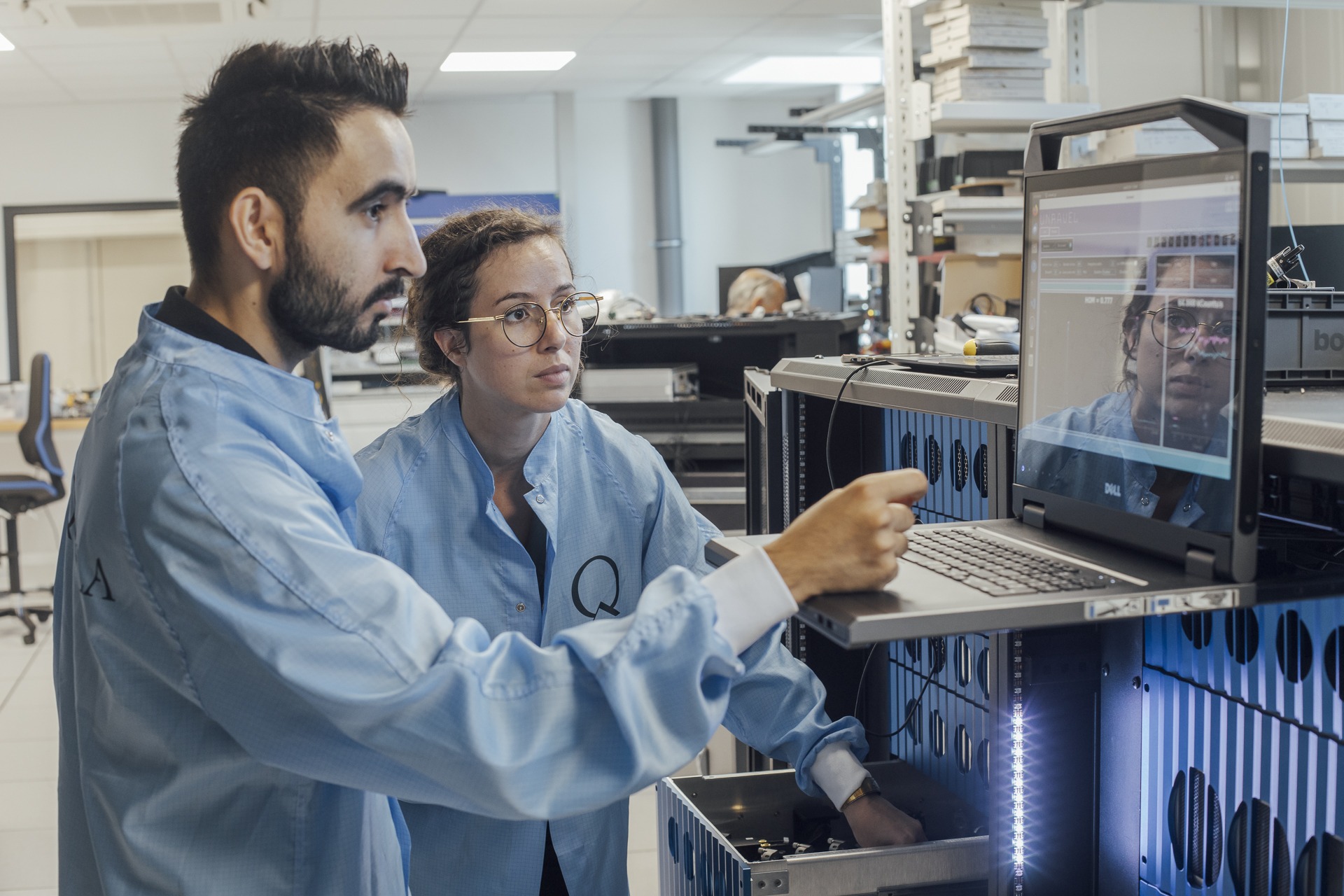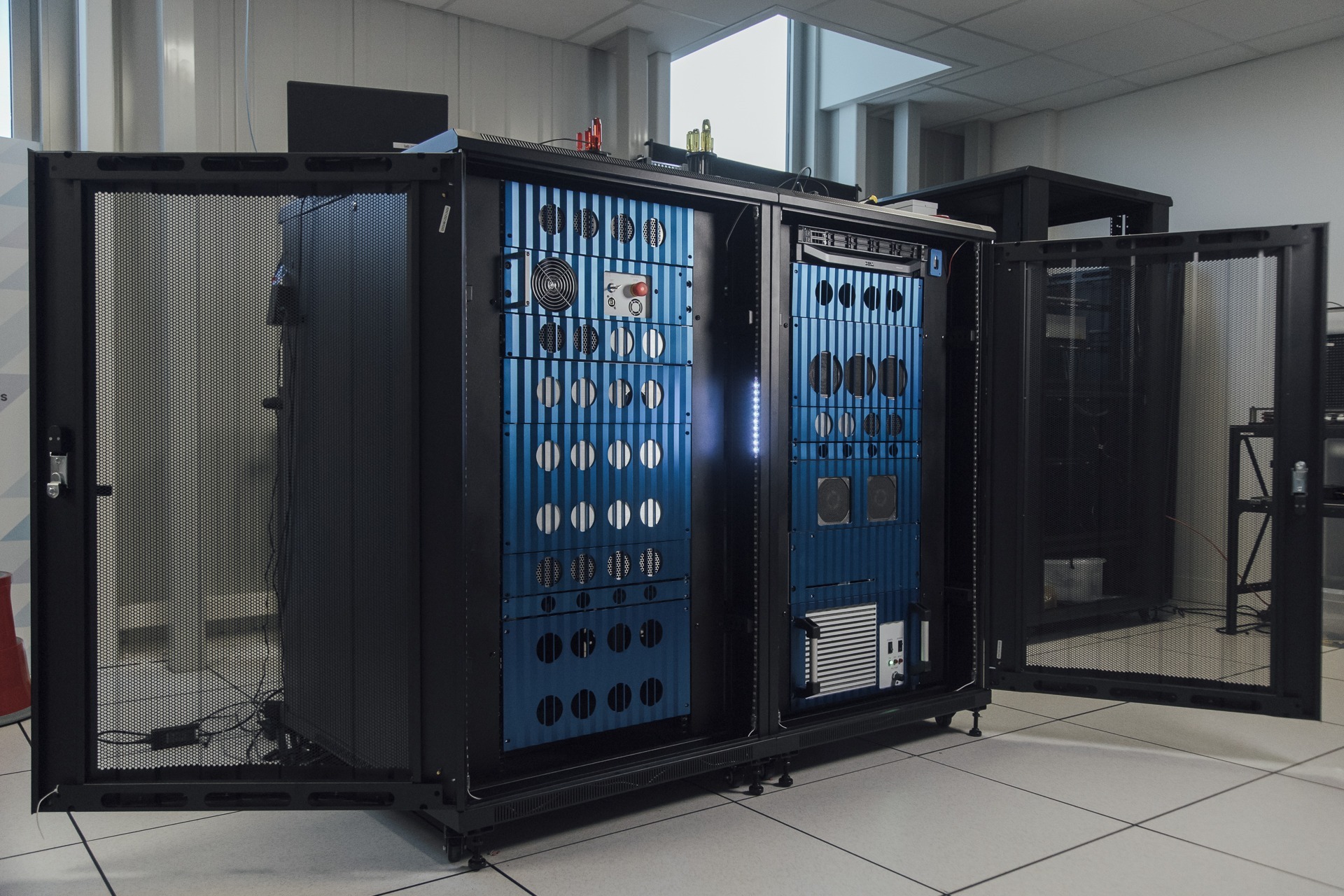Early electronic computers, such as ENIAC in the 1950s, were built using bulky components that required a significant amount of space. Over time, advancements in semiconductor technology led to compact, highly efficient computational units, enabling modern smartphones to surpass the capabilities of early classical computers.
A similar transformation is happening in optics. For centuries, researchers have used bulk optical components—such as lenses, mirrors, and prisms—to manipulate light for experiments and applications. With a focus on the long term and practical applications, it is beneficial to transition to integrated optics. A Photonic integrated circuit (PIC) is a device that integrates multiple optical components on a single chip to manipulate light. Unlike bulk optics, PICs provide compact, stable, and scalable platforms for reconfigurable operations on light. PICs may additionally be fitted with integrated light sources and light detectors.
Components of photonic integrated circuits
A PIC consists of a mesh of waveguides with integrated optical components. The waveguides guide light through the chip. Common material platforms for waveguides are silicon, silicon nitride and glass.
Evanescent coupling between close waveguides is harnessed to transfer light between waveguides and thus implement integrated beamsplitters. Beamsplitters are linear optical components that can divide and combine beams of light. The reflectivity of these beamsplitters depends on the wavelength of light, and fabrication imperfections can introduce errors. Some designs are more resilient to wavelength detuning, improving stability in real-world applications.
Phase shifters are used to control the phase of light in a reconfigurable way. Thermo-optic phase shifters are technologically mature and widely used. They consist of heaters placed near waveguides. When a voltage or electric current is applied, the heaters generate heat, which locally modifies the refractive index of the waveguide and induces a phase shift on light. However, thermo-optic phase shifters are relatively slow and exhibit crosstalk, where adjacent phase shifters influence each other due to heat diffusion. Electro-optic phase shifters are a promising avenue for high-speed reconfigurable phase shifters, that is currently being explored.
Photonic integrated circuits in photonic quantum computing
PICs are key tools for developing photonic quantum computing and can be used in different computing paradigms. In qubit-based quantum computing, qubits can be encoded using the dual-rail encoding scheme, where a pair of waveguides represents a qubit. Universal linear optical circuits, a type of PIC, are designed to implement any linear optical transformation on photons, forming the backbone of the photon-native paradigm of quantum computing. Additionally, PICs contribute to measurement-based quantum computing by enabling fast single-qubit gates and integrated photon detection.
Frequently asked questions about photonic integrated circuits
- How is a photonic integrated circuit different from an electronic integrated circuit?
An electronic integrated circuit (IC) processes electrical signals, while a photonic integrated circuit (PIC) processes optical signals. PICs use light to transmit and manipulate information, offering advantages such as lower power consumption and faster data transmission in some applications.
- What are photonic integrated circuits used for?
PICs are used in telecommunications, optical computing, sensing, artificial intelligence, and quantum technologies. They enable miniaturization and integration of complex optical systems.
- Why are integrated phase shifters important in PICs?
Phase shifters allow precise control over the phase of light, enabling reconfigurable optical circuits, quantum operations, and high-speed optical communications.
- What material are used to fabricate PICs?
Common materials include silicon, silicon nitride, indium phosphide, and lithium niobate. The choice of material depends on the application and required optical properties.
- How do PICs contribute to quantum computing?
PICs provide a compact and stable platform for manipulating quantum information encoded in light. They support operations such as beam splitting, interference, and detection, which are essential for photonic quantum computing.


